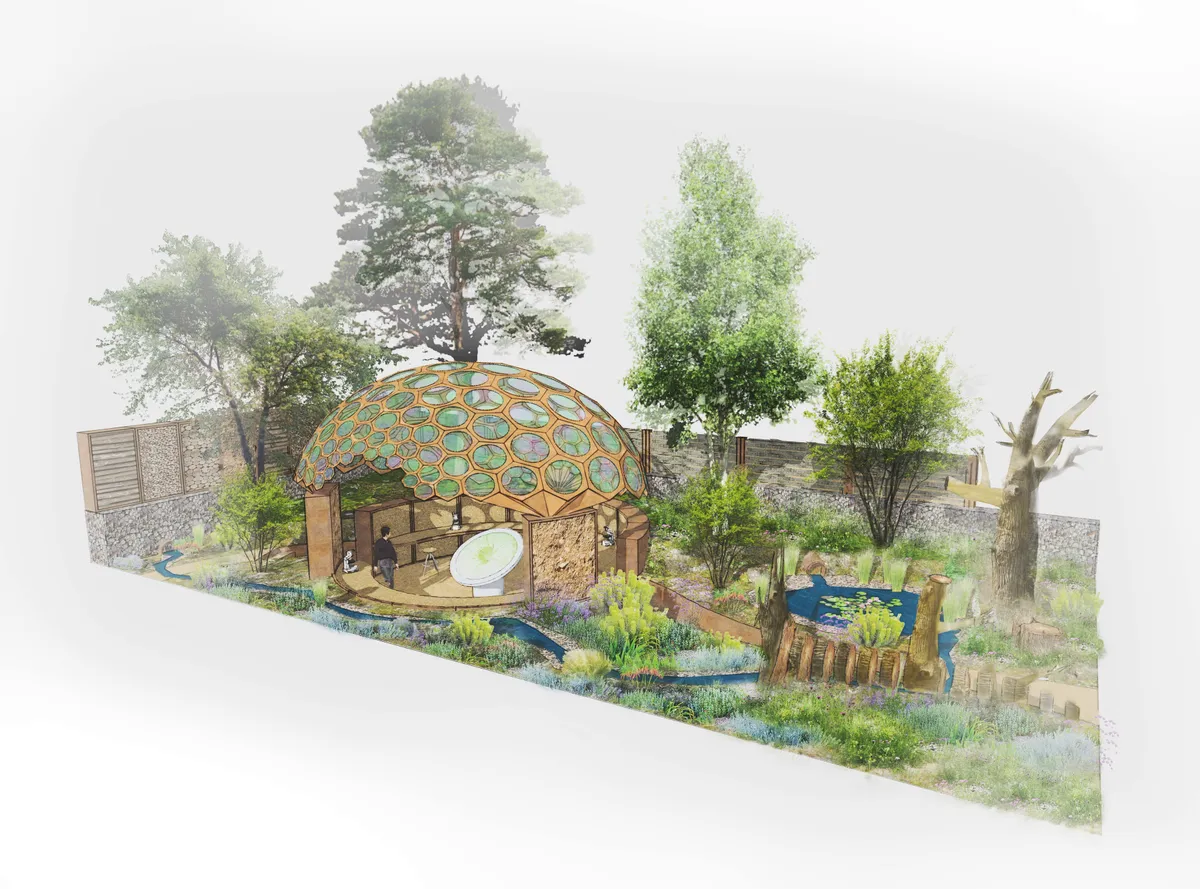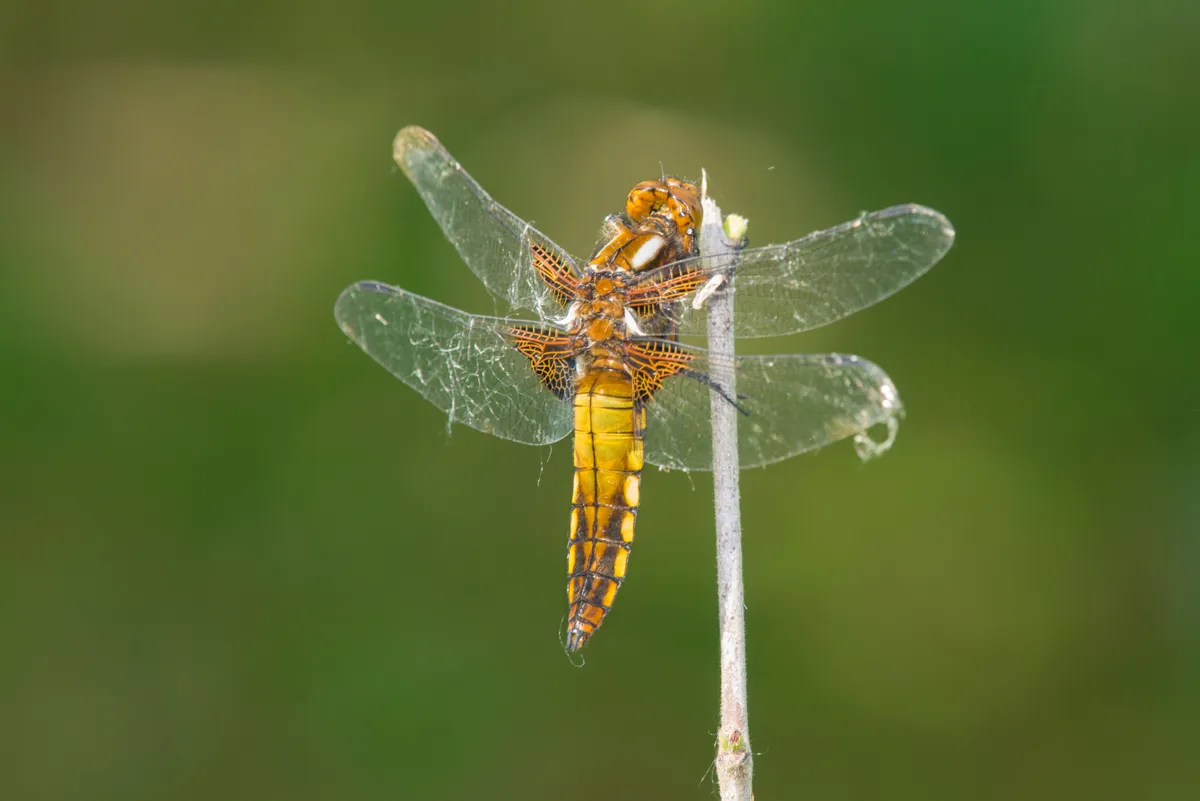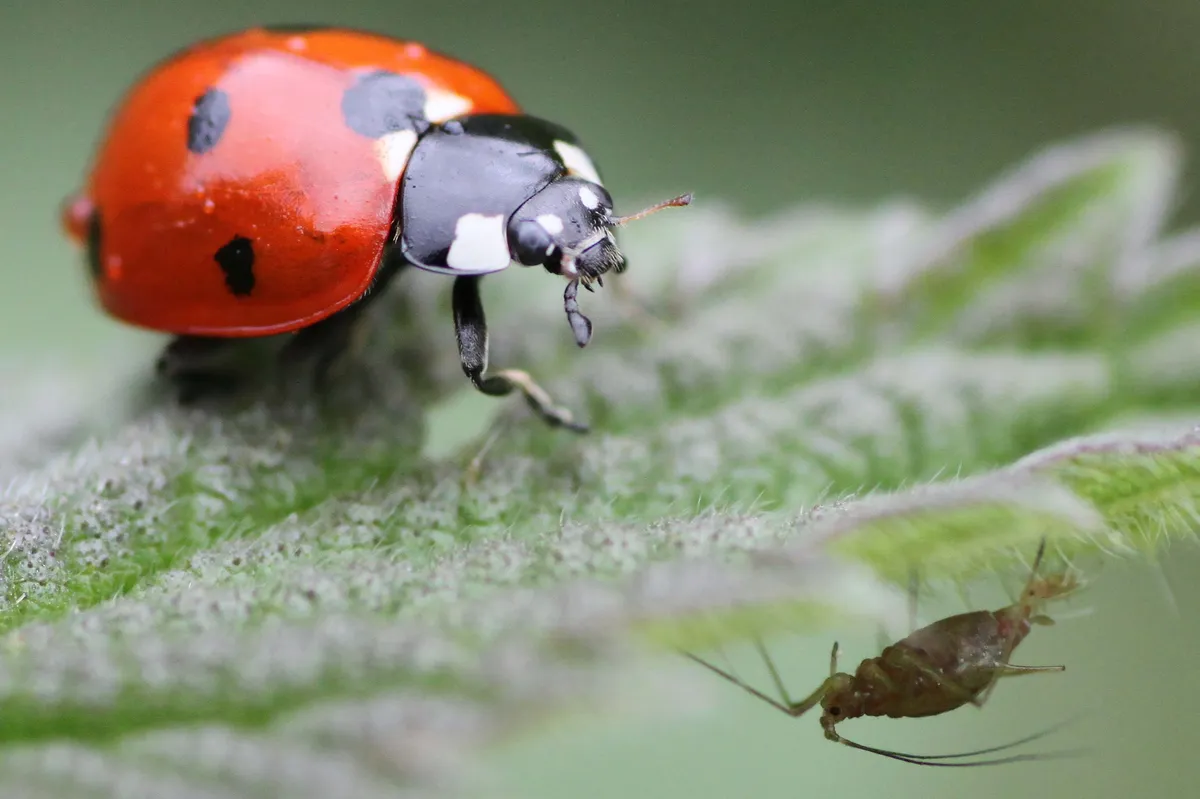Tom Massey's RHS Chelsea Flower Show garden in 2023 was The Royal Entomological Society Garden (RES), which was designed to be beneficial to a variety of insects. In our series, Small Stories, we partner with RES on a series of articles explaining more about the common insects you will see in your garden and unveiling some of the fascinating things about them. Here Tom explains more.
Read our Small Stories series
- Moths are overlooked but play an important role in our gardens
- Earwigs are perfect pest control
- Aphids are one of the most remarkable insects on the planet
- Dragonflies and damselflies once had huge wingspans
- Wasps are annoying but you definitely want them in your garden
- Ants may be small, but we should respect them
- Earwigs are great garden helpers
- Have an aphid infestation? The stinkiest fly in your garden can help
One of my earliest memories is of bug hunting in my first home, which had a small typical London garden. Being outside, on my knees at the lawn edges, and in the wilder areas of the planted borders, discovering I could hold and examine up close the creatures that make the garden their home was fascinating to me. I remember setting bottle traps overnight; a plastic bottle cut in half and buried in the ground yielded interesting discoveries in the morning. Beetles, woodlice, centipedes and other creatures had fallen inside waiting to be identified before being released back into the garden.
No doubt this childhood fascination with the miniature world in the undergrowth is common in many of us – making ant ‘nests’ with small branches and leaves, gathering woodlice from under pots and stones or letting shiny black beetles explore your hand before returning them to the lawn. So where does it go? When does our fascination with six-legged creatures become aversion to their strange and alien-like anatomy and habits?

Two years ago I was invited by the Royal Entomological Society (RES) to help imagine what a network of public access gardens that showcase planting and habitats for insects might look like. Under new leadership and with an ambitious mission to ‘enrich the world with insect science’, I soon found that my passion for species-rich, naturalistic and biodiverse landscape design dove-tailed perfectly with RES values, and I was keen to find ways to help the charity bring their love and appreciation of insects to new audiences. We decided to apply to Project Giving Back to fund an insect-themed show garden at RHS Chelsea Flower Show and were very lucky to be awarded the funding, with the garden soon to appear at the show in May.

A recent report published by the Royal Entomological Society found that better understanding and appreciation of insects is crucial if humans are to continue to thrive on earth. Insects benefit humans in innumerable ways; they are essential to human food systems, they process much of our waste and they continue to inspire major technological advances in medicine, genetics and engineering.
Too many of us have lost that childhood fascination with insects and other important invertebrates, but unless we all value them as equals to more well-loved species of mammals and birds, access to research funding will dry up and our already scant knowledge of insects will not advance. Of the over one million species of insects currently known to science (which is a fraction of the total number estimated to exist globally), we have only begun to understand around 20 per cent.

The garden we are creating at RHS Chelsea Flower Show this year, which will live on as a permanent publicly accessible garden for urban insect science and learning at IQL Stratford (a high footfall area of public realm just outside the Queen Elizabeth Olympic Park), is a hopeful first step to increasing public knowledge and interest in entomology, inspiring once again the wonder that observing tiny creatures can bring. This new series of feature articles is an exciting collaboration between Royal Entomological Society and Gardens Illustrated. It will focus on a different insect each month, offering new insights about some of our most loved, and loathed, miniature garden inhabitants. Gardeners are well-placed to lead the way in creating welcoming habitats and year-round food sources for insects, which are having to quickly adapt to our changing climate, and through this Small Stories series we want to show that being insect-friendly doesn’t mean you have to let your garden go completely wild.

The series kicks off in May with public enemy number one: the aphid. Not only are these formidable sap-sucking insects able to clone themselves, some reproduce a-sexually and give birth to live young, which explains how they can so quickly dominate particular garden plants. But they provide a rich food source for many other beneficial garden insects including ladybirds, lacewings, hoverfly larvae and parasitic wasps. Using chemical pesticides only serves to create resistant generations and so we must learn to let nature take its course, or switch to biological controls.

The series will also be taking a close look at dragonflies, moths, wasps, earwigs, ants, lacewings and stag beetles. With fabulous photography and fascinating facts about these unique and precious creatures, I hope you’ll be inspired to take a second look at the insects living right outside your window and rediscover your inner childhood wonder.
Join the conversation on social media and sign up to the Gardens Illustrated and Royal Entomological Society newsletters to receive updates direct to your inbox.
Head to our Chelsea Flower Show hub page for all our coverage